Introduction to Air Cooler Cooling Pads
Air cooler cooling pads play a pivotal role in the performance and efficiency of evaporative coolers, commonly known as swamp coolers. Their primary function is to absorb water and enhance the cooling process through the evaporation of this moisture. When warm air is drawn into the cooler, it passes through these saturated pads, which cool the air before it is circulated into the living space. The effectiveness of an air cooler largely hinges on the quality and functionality of its cooling pads.
Cooling pads are typically made from materials such as cellulose, aspen, or synthetic fibers, each exhibiting unique properties that affect their performance. Cellulose pads are known for their high absorption capacity and durability, making them a popular choice for many air cooler designs. Aspen pads, made from natural wood fibers, provide effective cooling as well; however, their lifespan tends to be shorter compared to cellulose. Lastly, synthetic pads can be engineered to enhance air flow and are less prone to mold and mildew, offering an alternative based on environmental considerations.
The selection of appropriate cooling pads is crucial for optimal air cooler efficiency. Their size, thickness, and material composition not only determine how much moisture they can hold but also influence the airflow resistance. When cooler air flows through these pads, the intricate structure offers a larger surface area for evaporation, hence maximizing cooling. Furthermore, the integration of a robust frame to hold the cooling pads in place affects the overall functionality and longevity of the air cooler. Understanding these elements establishes a foundation for examining the specific role of the frame and its relevance in ensuring proper support and maintenance.
The Role of the Cooling Pad Frame
The cooling pad frame is a pivotal component in air coolers, playing a crucial role in the efficiency and performance of the cooling system. This structure provides essential support to the cooling pads, which are integral in the evaporation process that effectively lowers air temperature. By maintaining the shape of the cooling pads, the frame ensures that they remain properly aligned and positioned, facilitating optimal airflow and enhancing the overall cooling effect.
Moreover, a well-designed cooling pad frame promotes consistent exposure of the pads to airflow, allowing for efficient moisture evaporation. This process is critical, as the effectiveness of an air cooler largely depends on the quality of airflow passing through the pads. If the pads sag or shift from their designated position due to inadequate support, it can hinder airflow, leading to reduced cooling performance. Thus, the structural integrity provided by the frame is indispensable in maintaining the cooling pads’ effectiveness.
In summary, the cooling pad frame is essential for maintaining the integrity and efficiency of air coolers. Its support ensures that cooling pads do their job effectively, allowing for optimized airflow and enhanced cooling performance.
Choosing the Right Cooling Pad Frame
Selecting the appropriate cooling pad frame for your air cooler is a vital decision that can significantly influence its efficiency and performance. Several factors should be considered to ensure that the cooling pad frame not only fits your air cooler model but also enhances its cooling capabilities. The first aspect to consider is size compatibility. Each air cooler model has specific dimensions, and a frame that does not fit properly may hinder airflow and cooling performance. Therefore, it is crucial to measure both the cooling pad and the air cooler unit before making a purchase.
Material choice is another critical factor when selecting a cooling pad frame. Common materials used include plastic, metal, and composite materials. Plastic frames are lighter and may be less durable, while metal options are often sturdier and provide better longevity. Consider your own usage context; if you move your air cooler frequently, a lighter material may be beneficial. Conversely, if it remains stationary, a metal frame might provide the best durability. Ensure that the selected material can withstand various environmental factors, such as humidity and temperature fluctuations, as these can affect the longevity and performance of your cooling pad.
The design of the frame also plays a crucial role in optimizing cooling performance. Look for frames with features that promote better airflow and support the pad’s structure, as well as those that allow for easy installation and maintenance. It may be beneficial to examine user reviews or recommendations to gauge the effectiveness of different designs. Measure the necessary dimensions accurately to guarantee a snug fit with the air cooler. Following these guidelines will help you choose a cooling pad frame that not only fits your air cooler but also maximizes its cooling efficiency.
Maintenance and Care for Cooling Pad Frames
Maintaining the cooling pad frame of your air cooler is essential for ensuring its longevity and optimal performance. Regular upkeep not only enhances the efficiency of the cooler but also helps in preventing any potential damage that could arise from neglect. The following practical advice will guide you in caring for your cooling pad frame effectively.
First and foremost, it is pivotal to periodically clean the cooling pad frame. Dust and debris can accumulate over time, impeding airflow and reducing the cooler’s efficiency. To clean the frame, turn off the air cooler, and unplug it for safety. Use a soft brush or a microfiber cloth to gently remove any dust from the surface. For a deeper clean, a mild detergent mixed with water can be applied using a soft sponge. Ensure that the frame is dried thoroughly after cleaning to prevent any moisture from causing corrosion or mold growth.
Furthermore, it is important to regularly inspect the cooling pad frame for any signs of wear and tear. Look for cracks, loose components, or areas where the material may be fraying. Catching these issues early can prevent further damage and maintain the integrity of the cooling pad. If any parts are found to be defective, replacing them promptly will ensure that the air cooler continues to operate efficiently.
Additionally, protecting the cooling pad frame from moisture and extreme elements is crucial. If your air cooler is placed outdoors, consider investing in a protective cover to shield it from rain and direct sunlight. Keeping the cooler in a shaded area whenever possible can significantly reduce exposure to humidity and other damaging conditions. By incorporating these maintenance and care strategies into your routine, you can maximize the lifespan of your cooling pad frame and enhance the overall performance of your air cooler.
Troubleshooting Common Issues with Cooling Pad Frames
Cooling pad frames play a crucial role in ensuring the efficient functioning of air coolers. However, like any component of an appliance, they may encounter issues that can diminish performance. Common problems include sagging, warping, and improper fit. Identifying the specific issue is the first step in effective troubleshooting.
Sagging is often a result of age or inadequate support. When a cooling pad frame sags, it can lead to uneven placement of the cooling pad, which may reduce airflow and cooling efficiency. To troubleshoot sagging, inspect the frame for signs of wear or damage. If the frame material appears weakened, consider tightening any screws or fasteners holding it in place. Alternatively, immediate replacement may be necessary if the damage is too extensive.
Warping occurs when the frame becomes misshapen due to exposure to excessive heat or moisture. This can hinder the cooling pad’s ability to maintain proper contact with the airflow from the cooler’s fan. To assess warping, place the frame on a flat surface to check for discrepancies. If it is warped, some materials can be reformed with gentle heat; however, this is not always advisable. If warping is significant or the material is beyond repair, replacing the frame is advisable to restore optimal performance.
Improper fit is another prevalent issue that can arise with cooling pad frames. This often occurs when a frame is too large or small for the cooling pad, leading to airflow inefficiencies. To resolve fitting issues, ensure that the cooling pad and frame are compatible with each other. Adjust the positioning of the cooling pad within the frame, or consider purchasing a frame that correctly matches the dimensions of your specific cooling pad.
In some cases, the problem might not lie within the frame but rather in the cooling pad itself. If you’ve resolved all frame-related issues yet still experience cooling inefficiencies, assess the condition of the cooling pad. If it appears damaged or clogged, replace it promptly to restore your air cooler’s efficiency. Lastly, should issues persist despite your troubleshooting efforts, seeking professional help can provide further assistance in identifying and resolving complex problems.
| Air Cooler Brand Name | Aisen, Arctic, Bajaj, Blue Star, Blueberry, Butterfly, Candes, Cello, Cospex, Croma, Crompton, Crompton Greaves, Cruiser, CRUISER C.S.O., Daenyx, Godrej, Greenchef, HAVAI, Havells, Hindware, Hindware Snowcrest, Impex, Intex, Kelvinator, Kenstar, Khaitan, Krish, Lazer, Lifelong, Livpure, Maharaja Whiteline, Mccoy, Onida, Orient, Pigeon, Polycab, Power Guard, Raptas, Sansui, Singer, Sunflame, Symphony, T-Series, Thomson, Usha, V-Guard, Varna, Vego, Venus, Voltas, Wybor |
|---|---|
| Air Cooler Capacity | 21 to 60 liters, 40 to 80 liters, 60 to 85 liters, Below 20 liters |
| Air Cooler Type | Desert, Personal, Room, Tower, Window |
| Technician Type | With Technician, Without Technician |
Only logged in customers who have purchased this product may leave a review.
Related products
-
Air Cooler Parts
Air Cooler Motor Capacitor
₹390.00 – ₹990.00 Select options This product has multiple variants. The options may be chosen on the product pageRated 0 out of 5 -
Air Cooler Parts
Air Cooler Fan Motor
₹2,340.00 – ₹2,940.00 Select options This product has multiple variants. The options may be chosen on the product pageRated 0 out of 5 -
Air Cooler Parts
Air Cooler Fan Blade
₹520.00 – ₹1,120.00 Select options This product has multiple variants. The options may be chosen on the product pageRated 0 out of 5 -
Air Cooler Parts
Air Cooler Speed Control Knob
₹390.00 – ₹990.00 Select options This product has multiple variants. The options may be chosen on the product pageRated 0 out of 5

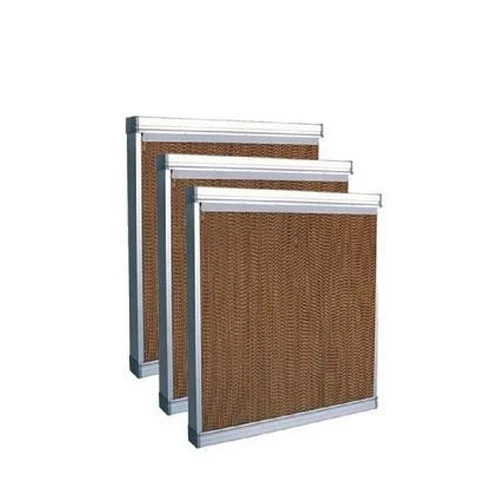
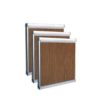
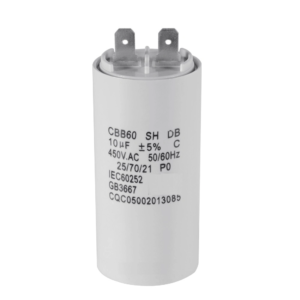

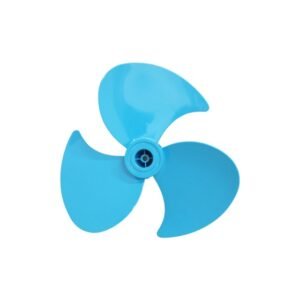
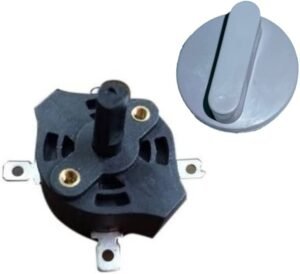
Reviews
There are no reviews yet.